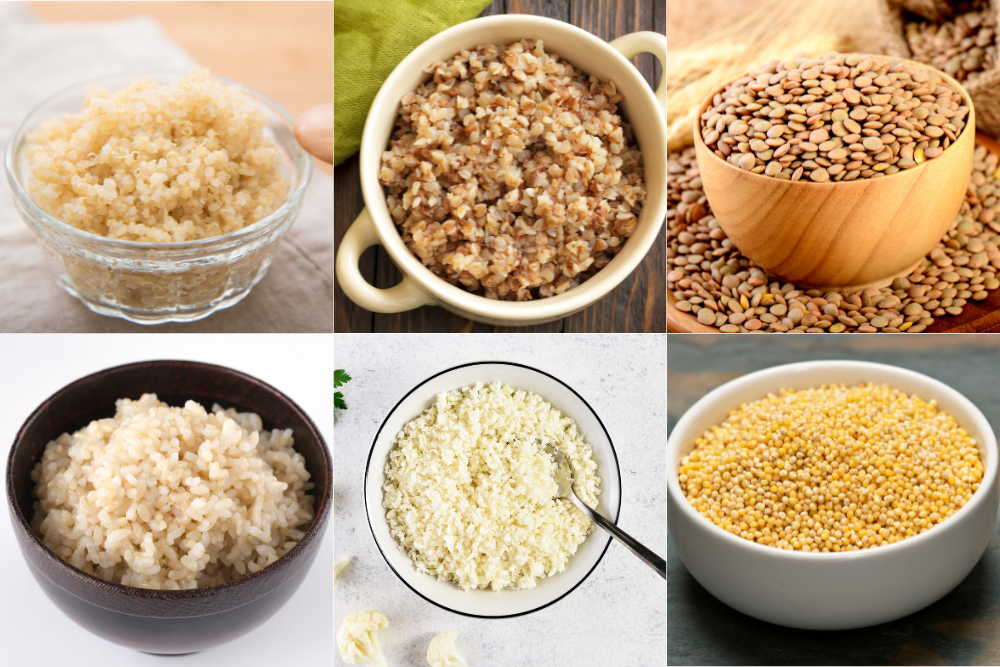
Are you looking for a gluten-free substitute for barley so you can make a family-favorite recipe? Or maybe you miss the taste and texture of barley? In this article, I discuss 10 gluten-free barley substitutes offering similar taste and texture. This post may contain affiliate links. Please see my disclosures.
Your recipe calls for barley, but you now follow a gluten-free diet. What do you do?
As you know, gluten is a protein found in wheat, rye, and barley, so barley is off-limits when you have celiac disease, gluten intolerance, or non-celiac gluten sensitivity.
Don’t fret. You can still make your old beef and barley recipe, but you’ll want to use one of the 10 gluten-free barley substitutes listed below.
Remember, when cooking with any of these barley substitutes, you may need to adjust the recipe’s cooking time and liquid, but you’ll still enjoy the recipe without gluten.
What is Barley?
Barley is a whole grain with a chewy texture and a slightly nutty and earthy taste. Experts say the cereal grain provides a rich source of B vitamins, including niacin, thiamin, pyridoxine (vitamin B-6), and plenty of dietary fiber.
You can find it at the grocery store either hulled (barley groats), which is the whole grain variety that includes the grain’s bran, germ, and endosperm, or milled or pearled barley, where the bran and germ are removed, leaving only the grain’s endosperm.

Whole-grain barley has a low glycemic index score of around 25-36, which indicates that barley is slowly digested and absorbed and won’t lead to high spikes in one’s blood sugar level.
The ancient grain is often used in various recipes, including soups, stews, salads, casseroles, and cholent, a Jewish stew traditionally made with beef and barley. The versatile grain is also used in the beer-making process.
Barley flour has become a popular flour used in baked goods like cookies. And, on top of it all, barley malt is a widely used flavor-enhancing ingredient found in products such as Rice Krispies, Corn Flakes, gravies, etc.
Unfortunately, food manufacturers don’t always call it barley; instead, innocent-looking names such as malt, yeast extract, brown rice syrup, malted vinegar, caramel color, and more are used to hint a product may contain barley.
The bottom line is that the protein found in barley (hordein) is off-limits to people with celiac disease or anyone following a gluten-free diet.
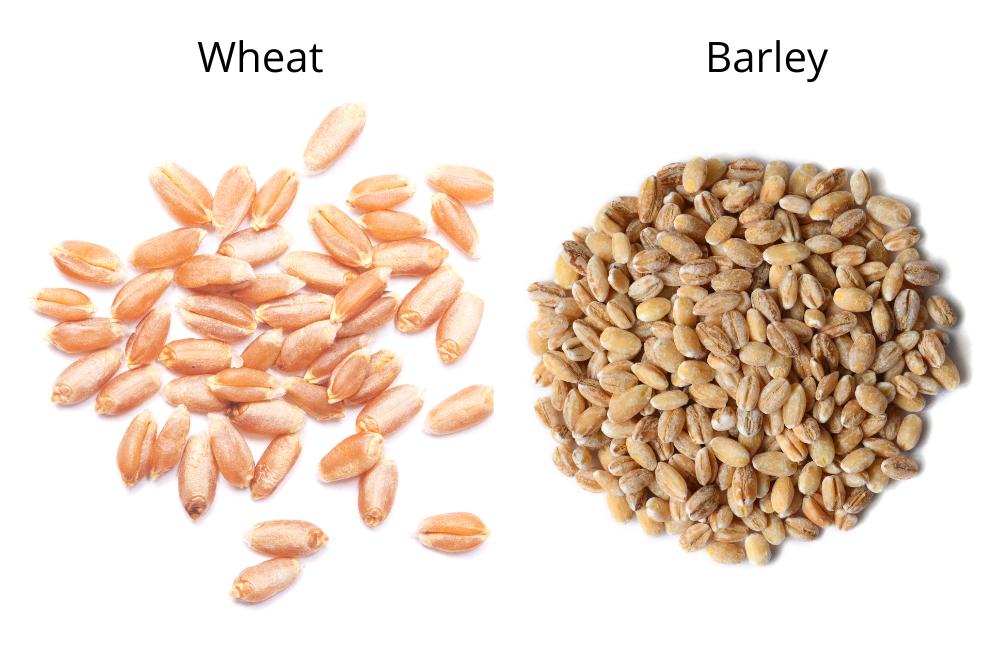
10 Best Gluten-Free Substitutes for Barley
Below are 10 gluten-free options that make the best substitutes for barley and can easily be found in grocery stores throughout the U.S.
Please note that some grains have a different texture and will cook differently than barley. You may need more or less liquid and/or a longer or shorter cook time than what is needed for barley.
(1) Quinoa
Quinoa is a popular gluten-free grain that can serve as an excellent barley substitute, particularly as one of the best pearled barley substitutes. Quinoa has a mild, slightly nutty flavor and a satisfyingly chewy texture.
Quinoa is also a good source of fiber, protein, and essential minerals such as magnesium and calcium. It’s the only grain that contains all nine essential amino acids, which qualifies it as a complete protein.
Use quinoa to replace barley in salads, stir-fries, and warm breakfast grain bowls.
Recipes to Try: Hearty Quinoa Vegetable Soup, Quinoa Pasta Salad with Lemon Dill Vinaigrette, or any of these 27 Tried and True Quinoa Recipes.
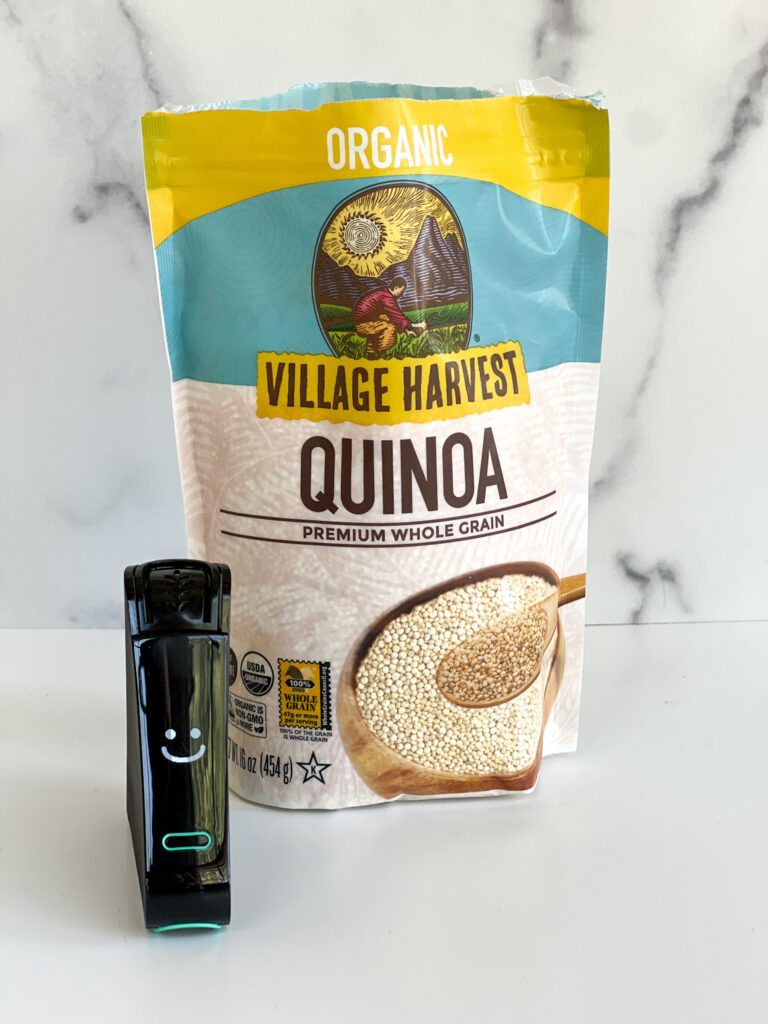
To learn more about how other brands of quinoa fared when tested for hidden gluten, read Is Quinoa Gluten-Free? To learn more about Nima, read What You Need to Know About Nima Sensor Before You Buy – Perspective from a Celiac & Nutrition Professional.
(2) Millet
Millet isn’t as popular as quinoa but still makes for a delicious barley substitute. Millet has a mildly sweet and nutty flavor, and its small, round grains offer a delightful crunch when cooked.
It’s also a good source of protein, fiber, and essential vitamins and minerals such as phosphorus, magnesium, and calcium.
Millet works well in soups, stews, and side dishes and can also be ground into flour for baking gluten-free baked goods like bread and muffins.
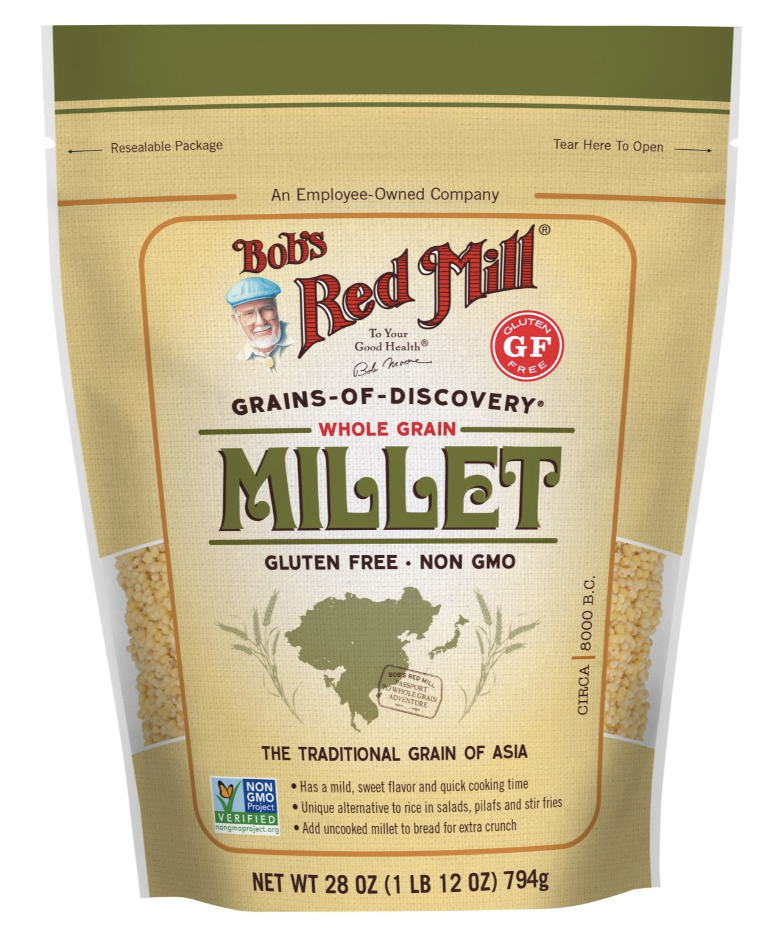
(3) Buckwheat
Despite its name, buckwheat does not contain wheat and is naturally gluten-free. Buckwheat has a unique, robust flavor with hints of nuttiness and earthiness. Roasted buckwheat goes by the name kasha.
Buckwheat contains essential vitamins, minerals, and antioxidants and is an excellent source of plant-based protein and fiber to support heart health, digestion, and blood sugar regulation.

Buckwheat groats can substitute for barley in salads, rice and pilafs, and porridge. It’s also often ground into flour and used in gluten-free baked goods such as buckwheat pancakes and buckwheat noodles. Beware that some buckwheat noodles also contain wheat and may not be gluten-free.

(4) Amaranth
Amaranth is a whole grain that packs a nutritional punch. It’s rich in important minerals such as manganese, magnesium, phosphorus, and iron and is a good source of fiber and phytonutrients.
The ancient grain has a slightly peppery and nutty flavor, and its small grains become soft and tender when cooked, similar to quinoa.
Use amaranth in soup and stews and as a thickener for sauces. It can also be popped like popcorn or ground into flour for baking.
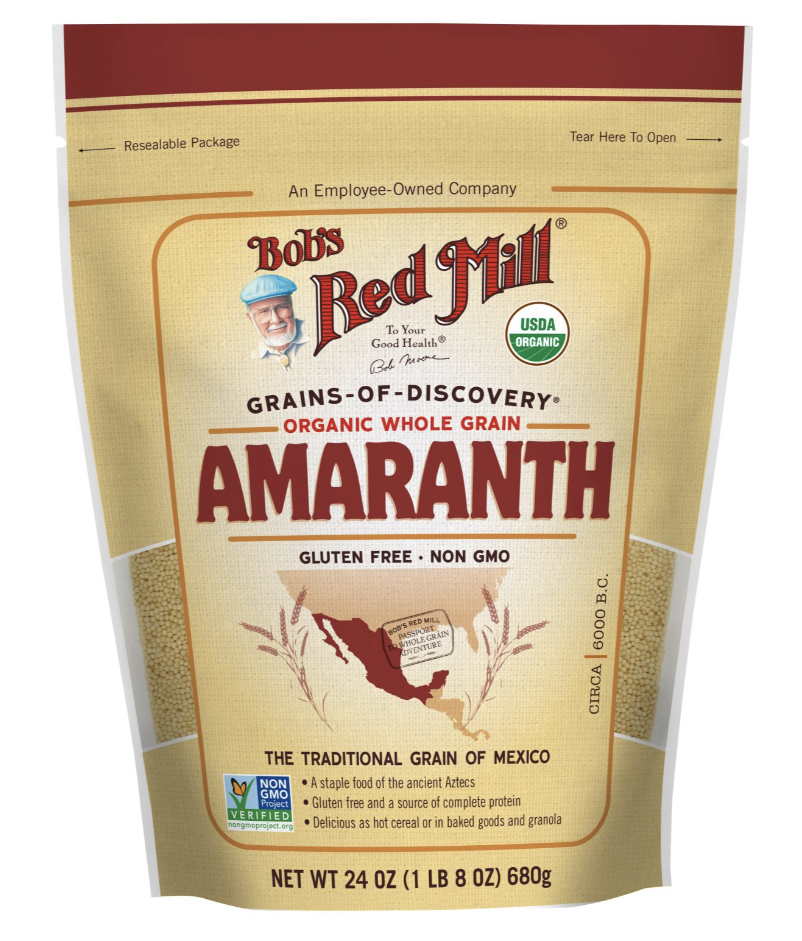
(5) Rice
Brown and white rice are staple grains in a gluten-free diet. All rice is naturally gluten-free and widely available at grocery stores.
With its neutral taste and varied textures (brown, white, black, wild, etc.), rice can be used as a good substitute for barley in various dishes, including the brown rice salad pictured below. I think brown rice has a texture (chew) most similar to barley.
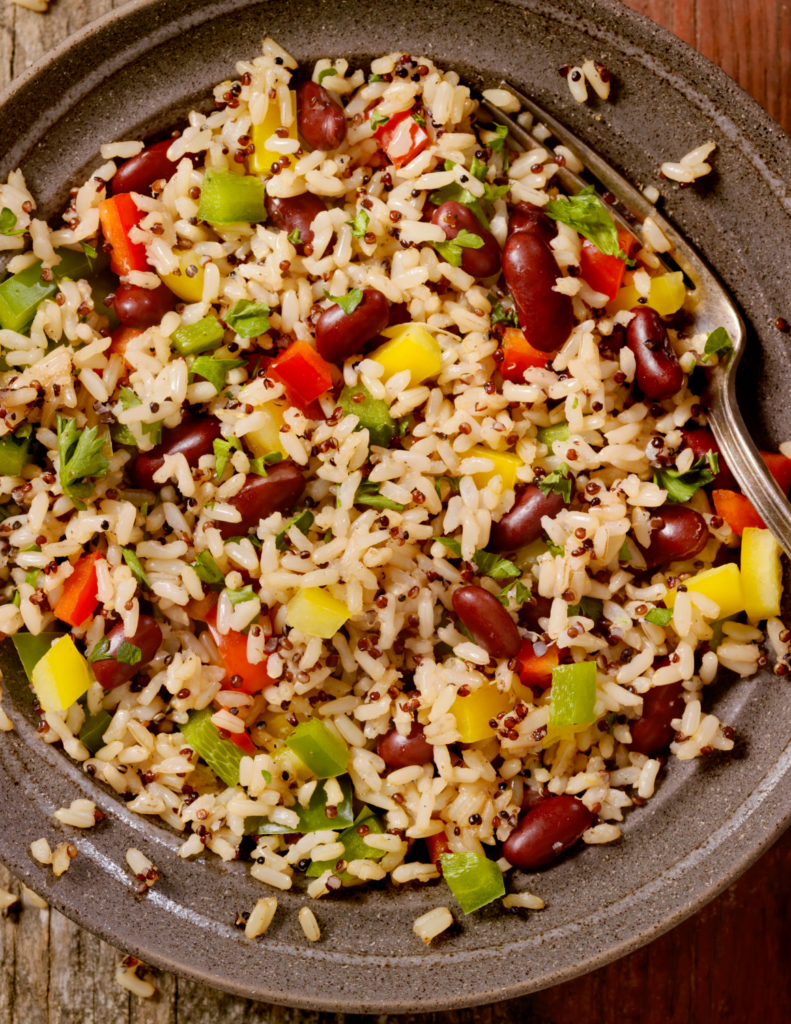
(6) Lentils
Lentils are an incredibly versatile legume found in various colors, including green, brown, and red. While not a grain, they have a similar chewy texture, like barley, and therefore can work as a barley substitute.
Use lentils in slow-cooked stews and soups, as well as in plant-based burgers and meatless patties. Just beware that many packages of lentils will say, “May contain wheat.” You must visually sort and rinse all lentils to ensure they contain no stray wheat or barley kernels.
Read more about how to safely enjoy lentils on a gluten-free diet in my article, Are Lentils Gluten Free?

(7) Sorghum
Sorghum is another versatile gluten-free grain that is a nutritious alternative to barley.
Packed with essential nutrients like fiber, protein, and antioxidants, sorghum has a hearty texture and mild, nutty taste.
Sorghum can be enjoyed as a fluffy side dish or salad or popped as a snack (like popcorn!). It’s also used as flour in baking.
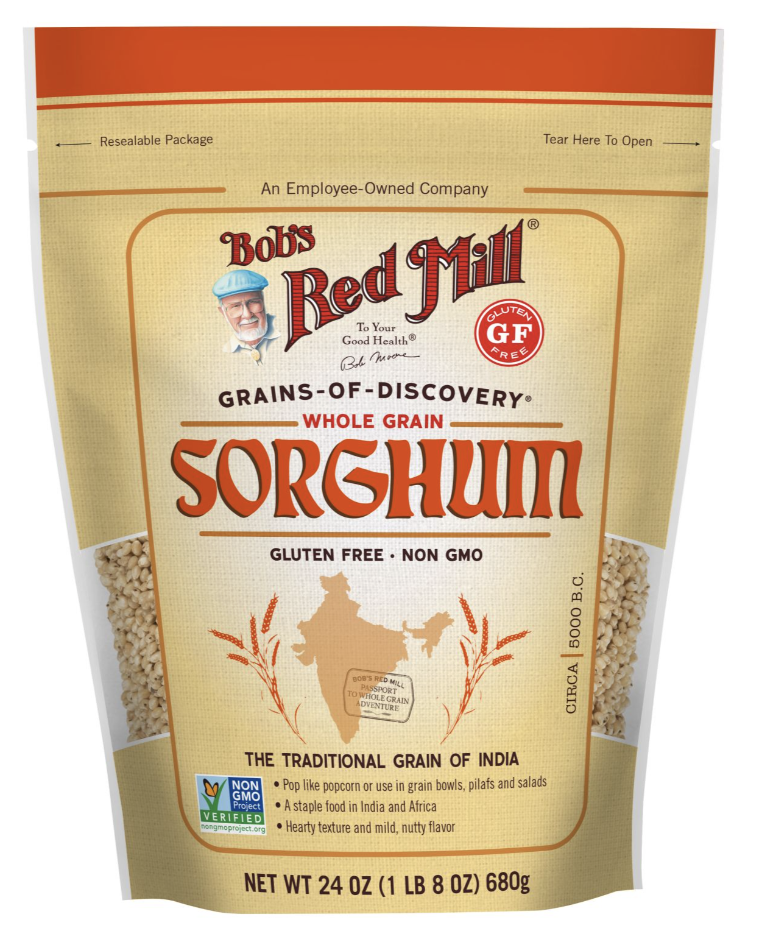
(8) Riced Cauliflower
While not a grain, rice cauliflower can be an excellent substitute for barley or any grain. Cauliflower rice is made by finely chopping or grating cauliflower into rice-like pieces.
Riced cauliflower can be used as a tasty and nutritious substitute for people looking to limit grains in their diet. Riced cauliflower is a great low-calorie and low-carbohydrate alternative offering good fiber, vitamins, and minerals.
Riced cauliflower won’t work in stews and soups but works well in salads and grain-free grain bowls. I use it when I make gluten-free tabbouleh salad.

(9) Gluten-Free Israeli Couscous
Regular couscous is not gluten-free; it’s made from wheat. However, some gluten-free Israeli couscous brands work as an alternative to barley or other grains.
I found one from Streit’s and only found it in grocery stores during Passover. It’s made from potato starch, tapioca starch, potato flakes, egg whites, and xanthan gum.
The Israeli couscous cooks well and has a wonderful texture I love, albeit nutritionally void.
I have identified several gluten-free couscous options and substitutes, so please read my Gluten-Free Couscous Guide for more information.

(10) Teff
Teff is a protein-rich ancient grain native to Ethiopia and used mainly in Ethiopian cooking. Teff is tiny in stature with a mild, nutty flavor. It’s an excellent gluten-free grain to use in porridge or stews.
Teff contains fiber, protein, and essential minerals like iron and calcium. Its unique nutty flavor adds depth to various dishes, and it can even be used in salads or to make gluten-free bread when ground into flour.

Avoid These Barley Substitutes
While the following grains can be used as a substitute for barley, they are NOT gluten-free and should be avoided by anyone following a gluten-free diet.
Bulger
Bulgur is cracked whole-grain wheat berries that are partially cooked, dried, and sold in grocery stores. The ancient grain is the main ingredient in tabbouleh, although I make gluten-free tabbouleh with riced cauliflower.
Couscous
As mentioned previously, couscous is not gluten-free because it’s made from tiny granules of durum wheat semolina, a type of wheat flour. This is true for regular couscous and pearled couscous. Some Passover-friendly brands make Israeli pearled couscous that are gluten-free. See above.
Farro
It’s important to know that farro is a form of wheat and contains gluten.
However, if you’re not following a gluten-free diet, you can use farro as a barley substitute. It has a nutty, rice-like texture that is similar to barley.
Farro encompasses three hulled wheat species: einkorn, spelt, and emmer. Avoid all products that contain any of those names.
The Bottom Line
If you’re following a gluten-free diet and a recipe calls for barley, there’s no need to worry. Plenty of gluten-free substitutes can provide a similar texture and flavor to your dishes without the need for this gluten grain.
I encourage you to experiment with quinoa, millet, buckwheat, amaranth, rice, and lentils, all of which make excellent barley alternatives. Just remember to adjust cooking times and liquids in any given recipe.
It’s also important to be cautious of other barely substitutes, like farro, bulger, and couscous, as they contain gluten and can make someone with celiac disease or gluten sensitivity extremely ill.
The bottom line is you should freely explore various gluten-free barley options so you can still enjoy a delicious bowl of beef and barley – err, beef and lentil – soup, all without compromising your dietary restrictions or overall health.
Related Reading
You might enjoy these related articles:

Leave a Comment